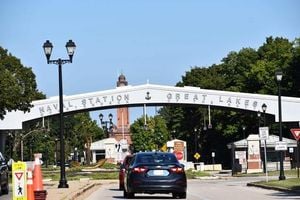California is once again at the heart of a fierce national debate over political power and the future of American democracy. As the November 4, 2025 special election approaches, Governor Gavin Newsom and his Democratic allies have launched a bold—and controversial—plan to reshape the state’s congressional lines, setting off a legal and political firestorm that now involves President Donald Trump, the Department of Justice, and activists on both sides of the aisle.
The spark for this battle came in July, when President Trump publicly demanded that Texas Republicans redraw their congressional maps to create five new GOP-leaning House seats, effectively erasing several blue districts. According to The Siren and CalMatters, this move sent shockwaves through liberal strongholds like California and New York, both of which soon began plotting their own countermeasures. In California, the response was swift: Governor Newsom announced the Election Rigging Response Act, a proposal to temporarily suspend the state’s independent redistricting commission and instead allow Democrats to draw new maps favoring their party. The plan would go before voters as Proposition 50 in a special statewide referendum.
This maneuver was not without its critics. California Republicans and anti-gerrymandering groups quickly mobilized, arguing that the move was a naked power grab and a betrayal of the nonpartisan principles that had governed the state’s redistricting process since 2010. As CalMatters reported, Republicans filed their second lawsuit in a week against the Newsom administration on August 25, 2025, seeking to remove Proposition 50 from the ballot. Their argument: the measure violates California’s single-subject rule for ballot initiatives and was rushed through the legislature without proper procedure.
“It should not be Gavin Newsom vs. Trump. It should not be California vs. Texas,” Corrin Rankin, chair of the California Republican Party, insisted at a press conference announcing the lawsuit. “It should be what’s in the best interest of Californians, and what’s in the best interest of Californians is for us to determine who represents us.”
Despite their efforts, Republicans suffered an early setback. The California Supreme Court denied their initial legal challenge around August 18-22, 2025. Undeterred, they pressed on, with support from high-profile attorneys and funding from figures like Charles T. Munger Jr., the main financial backer of the original redistricting commission. Pamphlets warning of a “political power grab” and “unconstitutional gerrymandering” began hitting mailboxes across the state on August 21, 2025, urging voters to “SAY NO” to Proposition 50.
But the opposition was not just legal or procedural—it was deeply political, and President Trump soon entered the fray. During an Oval Office press briefing on August 25, 2025, Trump threatened to sue California to halt Newsom’s redistricting plan, declaring, “I think I’m going to be filing a lawsuit pretty soon and I think we’re going to be very successful in it. We’re going to be filing it through the Department of Justice, that’s going to happen.” He also hinted at a separate lawsuit over the Senate’s use of “blue slips,” a tradition allowing home-state senators to veto judicial and U.S. attorney appointments, which he viewed as an obstacle to his own nominees.
While the specifics of Trump’s legal strategy remained unclear—neither the White House nor the Department of Justice offered details or a timeline—his threat electrified the political landscape in California. Governor Newsom, never one to shy away from a fight, responded with a defiant all-caps post on social media: “BRING IT.”
Newsom’s aggressive posture has resonated with many Democrats, both in California and nationally. As New York Magazine observed, Newsom’s social media presence has exploded as he adopts Trump-like tactics, mixing parody, memes, and pointed attacks on his opponents. This approach, while drawing criticism for its shallowness from some quarters, has energized the party’s base and positioned Newsom as a leading voice in the anti-Trump resistance.
“This is radical rigging of a midterm election,” Newsom said on The Siren podcast. “Radical rigging of an election. Destroying, vandalizing this democracy, the rule of law. So, I’m sorry. I know some peoples’ sensibilities. I respect and appreciate that. But right now, with all due respect, we’re walking down a damn different path. We’re fighting fire with fire. And we’re gonna punch these sons of bitches in the mouth.”
The stakes are high, and the outcome is far from certain. A poll released by the UC Berkeley Institute of Governmental Studies and the Los Angeles Times in late August showed Proposition 50 leading 48% to 32% among likely voters, but with a significant portion of the electorate undecided. The anti-Trump message has proven potent in California before—most notably during Newsom’s 2021 recall victory—but whether it will be enough to secure victory for Proposition 50 remains to be seen.
Meanwhile, Newsom’s national profile is rising. As New York Magazine noted, he is now seen as a top contender for the 2028 Democratic presidential nomination, running ahead of Vice President Kamala Harris in recent polls. His willingness to take on Trump directly, both online and in policy battles like redistricting, has made him a liberal hero at a time when many Democratic voters are hungry for leaders willing to “punch back.”
Yet, Newsom’s approach is not without risks. Critics point to California’s own struggles with wildfires, homelessness, and affordability as evidence that his leadership is far from flawless. And some Democrats worry that mimicking Trump’s style, no matter how effective in rallying the base, may not be enough to offer a compelling vision for the future or win over swing voters tired of partisan warfare.
For now, though, the redistricting fight has become a microcosm of the broader national struggle over democracy, representation, and the rules of the game. Newsom’s gamble—to meet Republican gerrymandering with Democratic gerrymandering, and to frame the battle as California versus Trump—reflects a new era of political hardball. Whether this strategy will pay off at the ballot box or in the courts is anyone’s guess, but one thing is clear: the outcome in California will reverberate far beyond the state’s borders, shaping the political landscape for years to come.
As the November election draws near, all eyes are on the Golden State, where the fight over who draws the lines may very well determine who holds the power.






